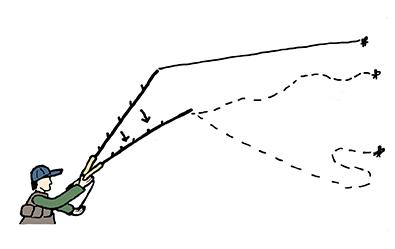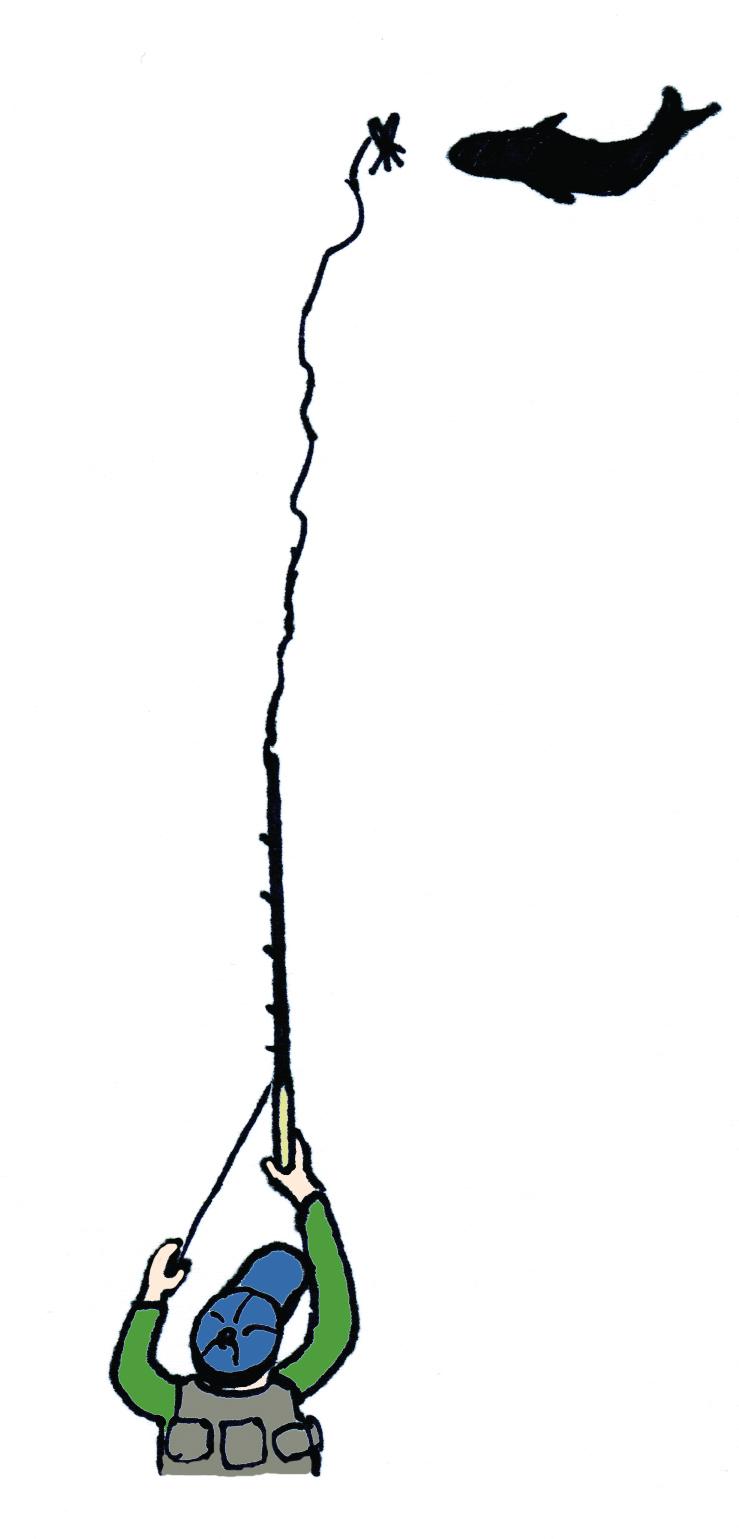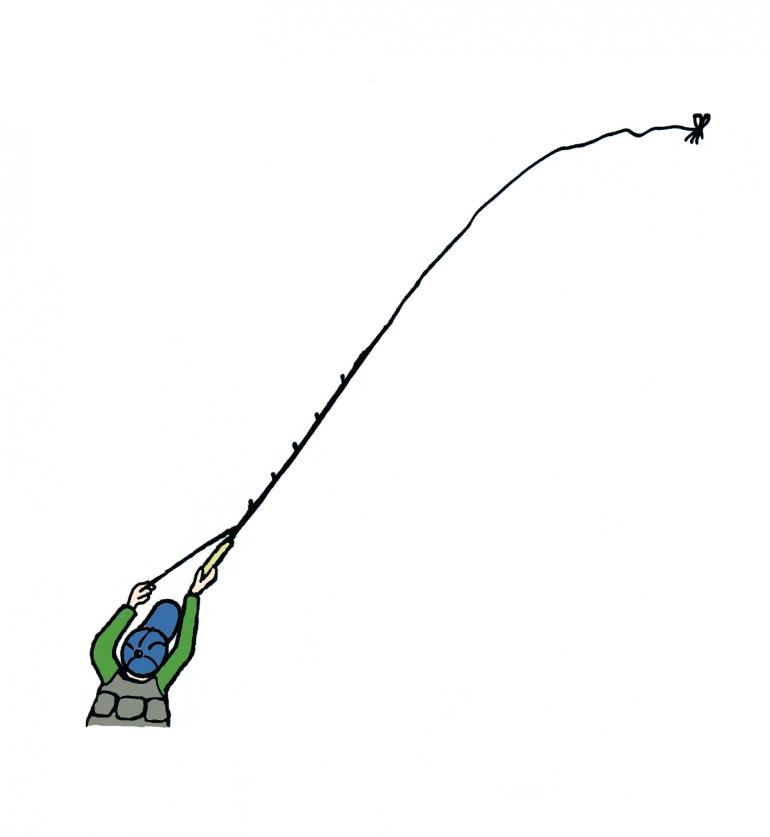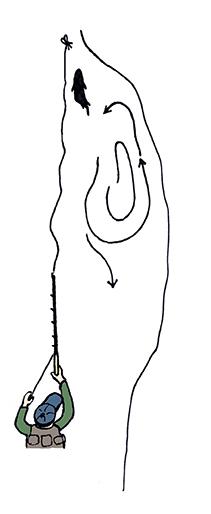Crank Up Your Cast
Tips for better fishing.
During the frenzy of the hatch, trout can become very selective. Finding the fish and figuring out what they’re eating is only half the battle—now you’ve got to present your fly to them properly. Here are three of the most effective casts I know.
The Reach Cast
Position yourself away from the fish (so it doesn’t see you), but also upstream from the fish to allow a better drift. As you make your forward cast, slide or “reach” your rod upstream. When your fly hits the water, immediately point your tip back downstream at the fly. This motion instantly builds a mend in your line and allows your fly to float over the fish with a deliciously natural look to it. Expert anglers will often feed a “stack mend” to their line, which involves pulling line off the reel and mending it to achieve a longer dead drift. Sometimes you’ll see a fish float backward underwater while checking out your fly, as if he is testing to see if it will drag. A tiny twitch at this critical moment can often trigger an attack.
The Slack-Line Cast
This cast is useful wherever the current is prohibiting a decent drift. Often the fish will line up just on the inside of the faster current where they can see the food coming, but don’t have to waste energy swimming hard. Aim high over the target and while your fly is falling, pull your line back towards you two or three feet. When your leader and fly hit the water, you’ll have two or three feet of perfect drift. The only disadvantages of this cast are that you lose a bit of accuracy and if the fish hits your fly instantly, you have more slack in the line to get rid of. A quick yet gentle strike can get rid of this slack, especially if you pull line down with one hand and strike up with your rod hand.
Shoot and Snub
The shoot-and-snub technique is a little more advanced. It works best when positioning yourself directly below your target, in the same speed of current that the fish is located in. If you are to the inside of the fish (where it is often easier to stand), your fly is going to drag just as it goes over the trout’s head.
Being careful not to go over your waders, sneak out into the current about 25 to 35 feet below the rising fish. To gauge your distance, make a false cast over the slower water, about three or four feet short of the fish. If your dry fly is wet, you can “pop” it dry by making a quick snap of the wrist at the end of your false-cast stroke. On your next and final cast, aim short of the target and shoot the extra three to four feet, “snubbing” the line with your line hand. This abrupt stop accelerates your leader and tippet, allowing a tighter loop to turn over. Always try to get your fly to come in low and fast without slapping the water. As soon as your fly hits the water, you’ll want to strip in at the same speed of the current to avoid slack.
















